Last Updated on June 6, 2024 by Nicole
Iguazu Falls, also known as Iguassu or Iguaçu Falls, is a breathtaking natural attraction situated on the border between Brazil and Argentina. Renowned as one of the largest and most spectacular waterfall systems globally, my husband and I spent three nights and two days in Foz de Iguazu, Brazil, in early November, exploring the falls on both the Brazilian and Argentine sides. Our experience was nothing short of incredible, and the remarkable scenery made the journey immensely worthwhile. In this article, I’ll share our accommodations, how we explored Iguazu Falls, and how much time you should set aside to fully appreciate this stunning location.
This post may contain affiliate links. I may earn a small commission at no extra cost to you if you purchase something through my site. This supports my website and helps produce articles I hope you find useful.
Background of Our Trip to Iguazu Falls
Before arriving at Iguazu Falls, my husband and I embarked on a 10-day Jaguar safari in the Pantanal region of Brazil. This unique adventure allowed us to witness 14 different jaguars, countless caimans, capybaras, numerous birds, as well as giant otters, tapirs, and giant anteaters among a variety of wildlife. We enjoyed days on beautiful rivers, away from crowds, observing these magnificent creatures.
For further details about our adventure, check out Jaguar Safaris in the North and South Pantanal: Which Is Better?.
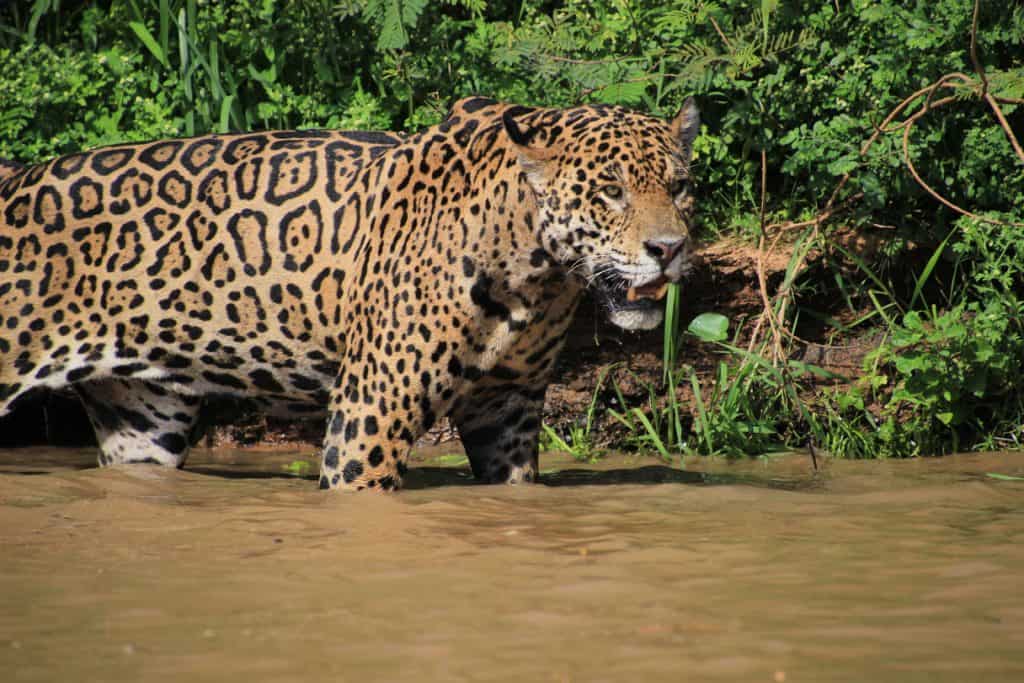
Following our Pantanal adventure, we spent three days in Bonito, Brazil’s top ecotourism destination, located in the Bodoquena Mountain Range bordering the southern Pantanal.
In Bonito, we explored the Gruta Do Lago Azul Natural Monument (Blue Lake Grotto) and Buraco Das Araras (Sinkhole of the Macaws). We also snorkeled in crystal-clear spring-fed waters, surrounded by stunning fish.
For more about our Bonito experience, see Best Things to Do in Bonito, Brazil.
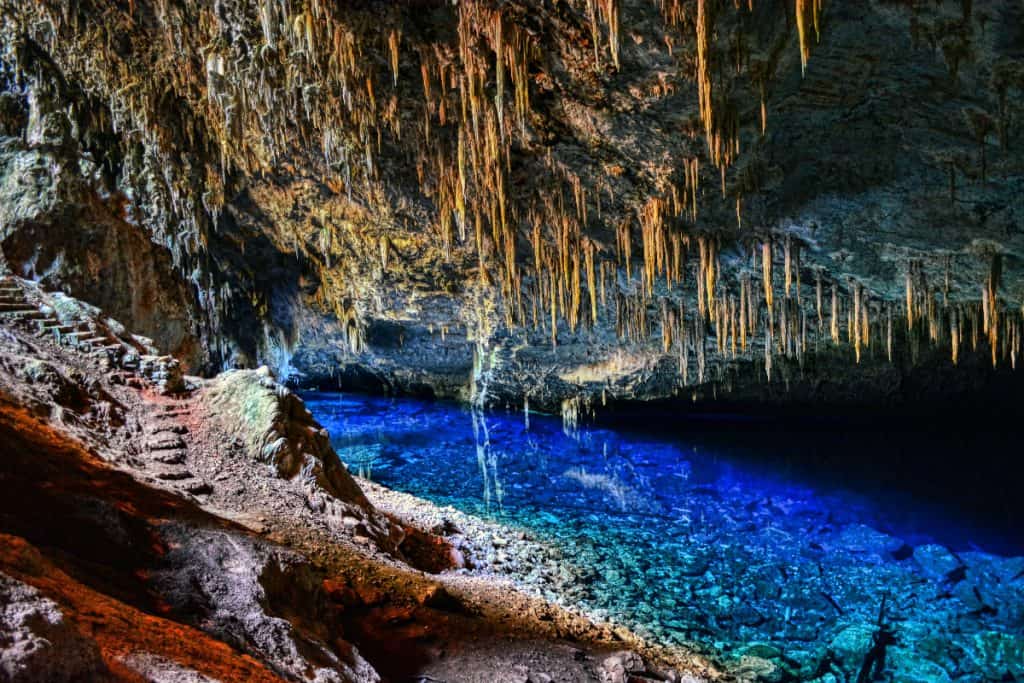
After Bonito, we proceeded to Iguazu Falls.
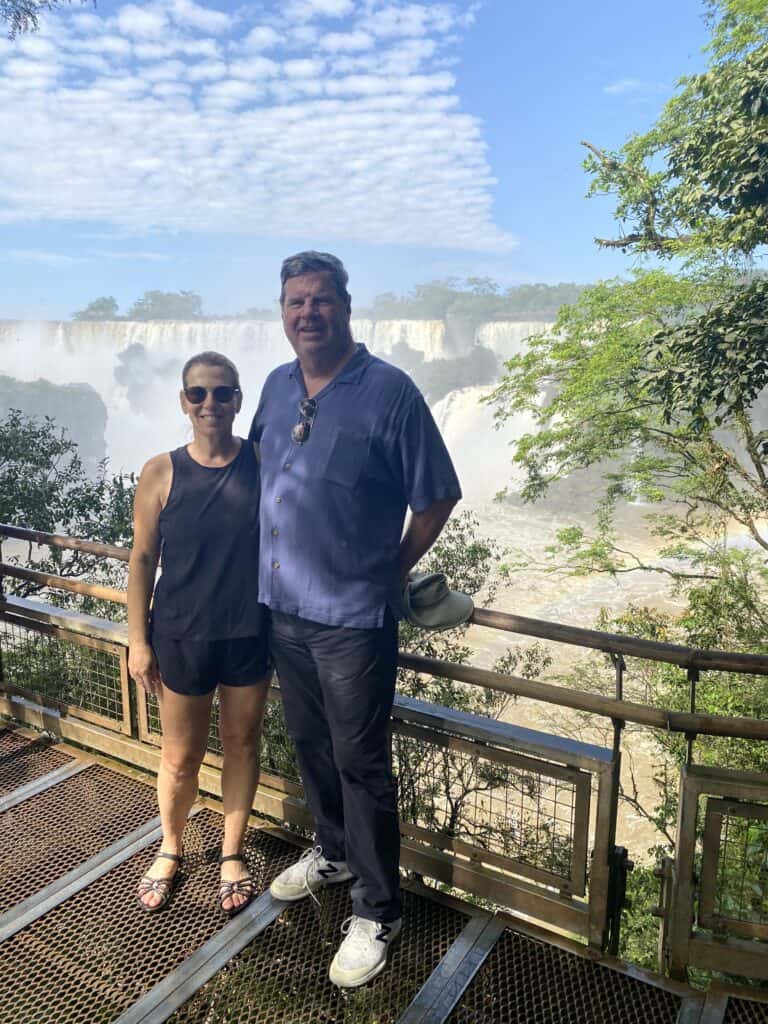
The Significance of Iguazu Falls
Iguazu Falls is regarded as one of the most awe-inspiring natural wonders of the world. It is the largest waterfall system globally and a UNESCO World Heritage Site.
Extending across the Argentina-Brazil border, it comprises around 275 separate waterfalls, with the actual number fluctuating between 150 to 300, depending on the season and water levels.
Iguazu Falls From the Argentine Side
The Argentine side features 80% of the falls and includes the Upper and Lower Trails, providing visitors with various perspectives of the falls.
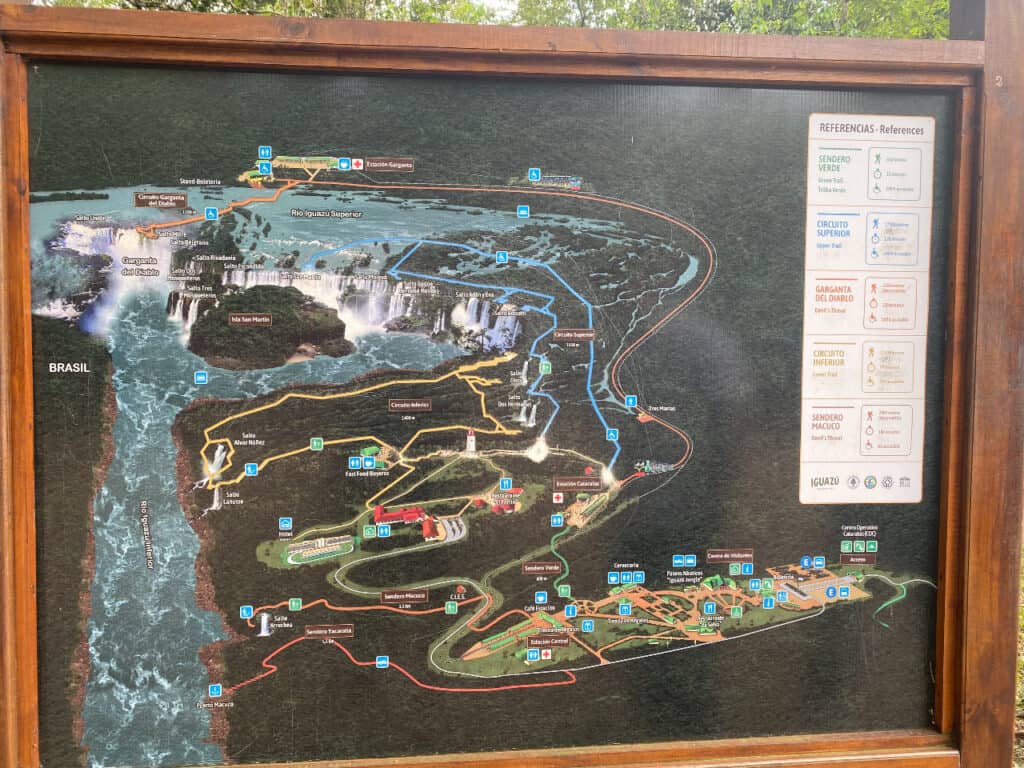
The Upper Trail offers breathtaking panoramic views of numerous falls. It is a relatively short path, just half a mile long, and takes about an hour to complete. With catwalks positioned above the falls, visitors can enjoy views from nearly 200 feet high. It’s truly an impressive sight and is fully accessible with no stairs.
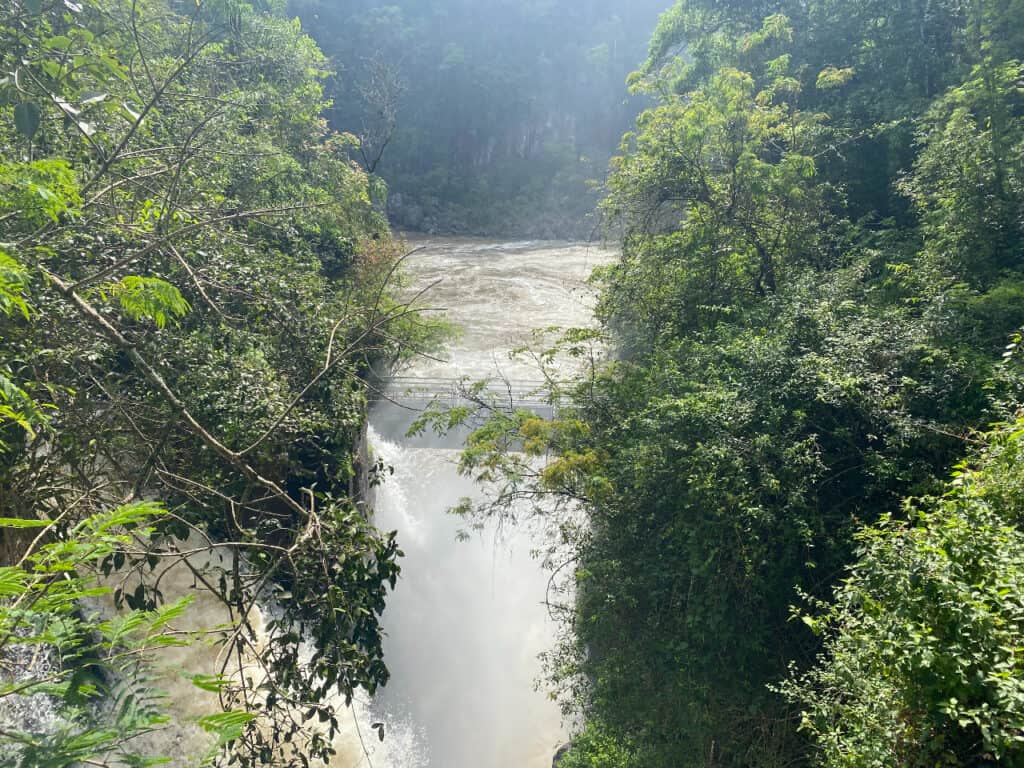
The Lower Trail brings you closer to the falls and their misty spray. Expect to spend 2-3 hours on this path, which features multiple viewpoints and trails. While there are stairs along this route, you can circumvent some, though not all, with small detours.
Overall, the Argentine side tends to attract more visitors than the Brazilian side because of these trails. Walking directly over the falls, often just feet away from them, delivers an exhilarating experience. The thunderous roar of the water is deafening, and you can physically feel the force of the cascades.
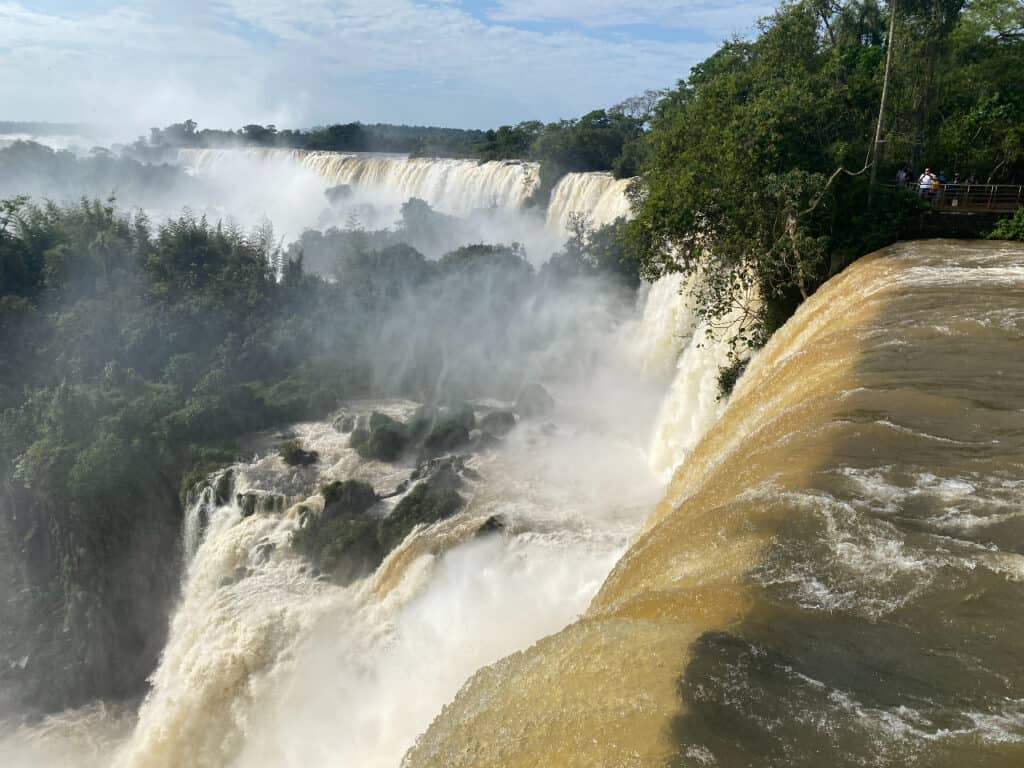
As you walk through the various pathways, you’ll also spot beautiful birds and other wildlife.
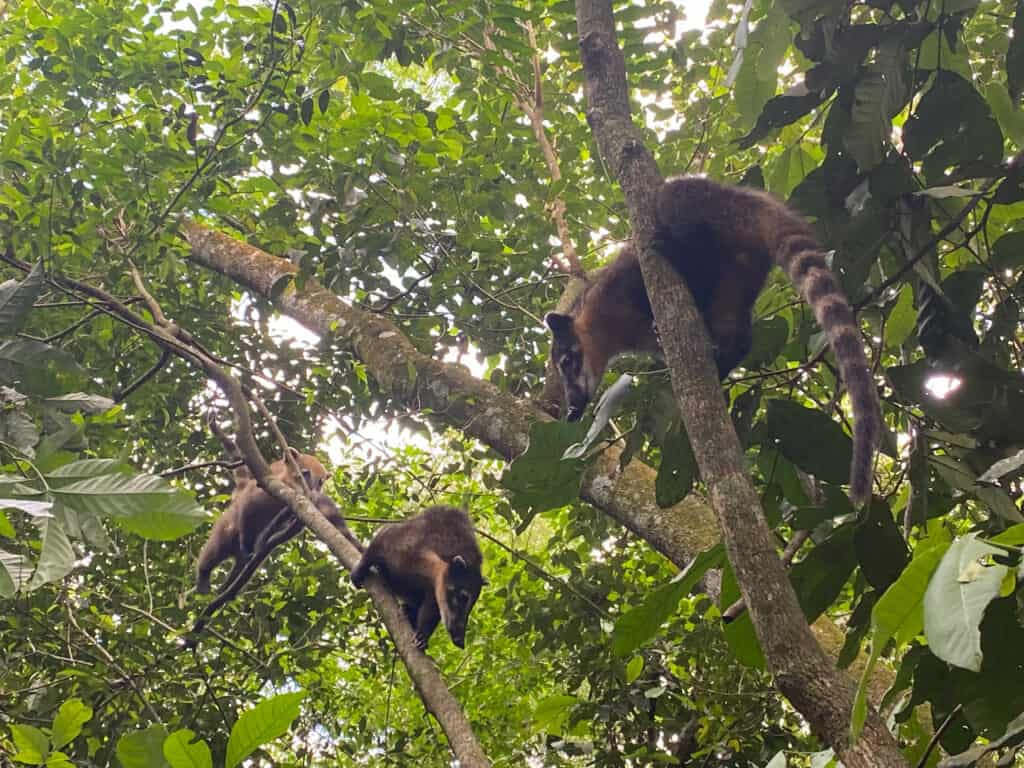
Iguazu Falls From the Brazilian Side
The experience from the Brazilian side contrasts sharply, providing panoramic views of all the falls rather than more intimate glimpses of individual cascades. While the majority of the falls lie within Argentina, the most stunning perspectives are found from Brazil!
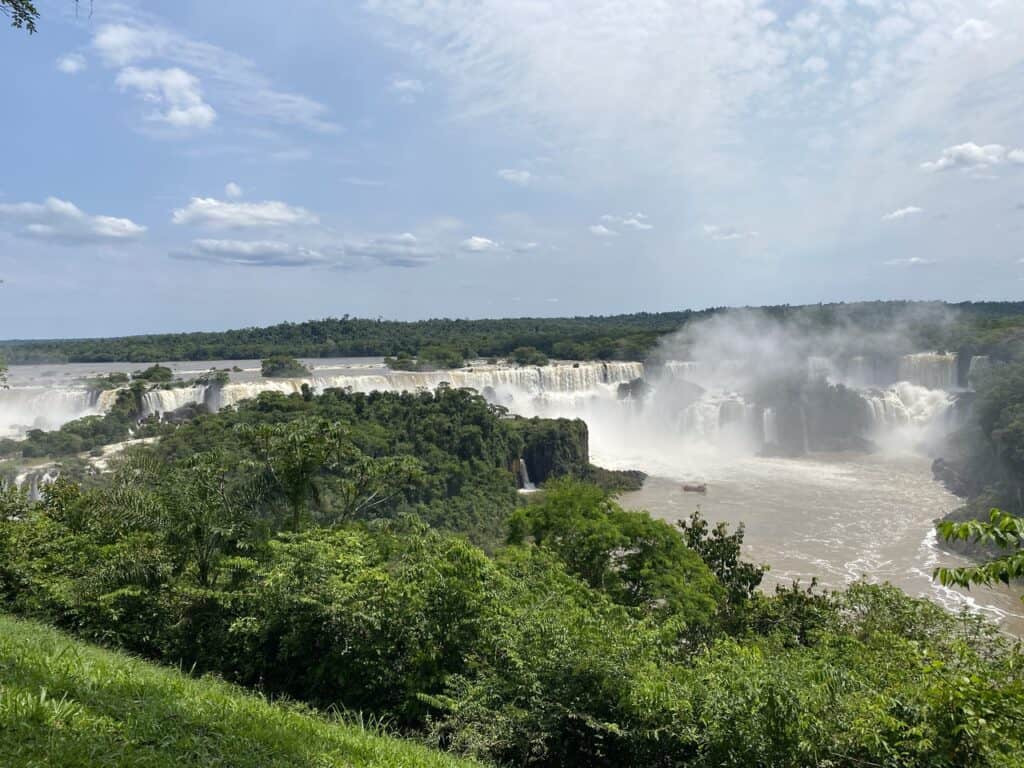
The Brazilian side features a single long walkway (around 5,000 feet or 1,500 meters) that allows you to enjoy a continuous view of the falls. Navigation is less challenging compared to the Argentine side, with no stairs to navigate. You can easily walk the entire path in under an hour.
At the end of the walkway lies a magnificent set of 14 falls known as Devil’s Throat, standing 260 feet (80 meters) high with a staggering 2,000 cubic meters of water pouring over each second.
This walkway is engineered to offer various vantage points from the base to the side of the falls. At one juncture, you walk almost directly into the mist, getting soaked by the spray, wind, and splashes. Many visitors bring rain jackets or large plastic coverings, while others simply embrace the experience and revel in the water soaking them.
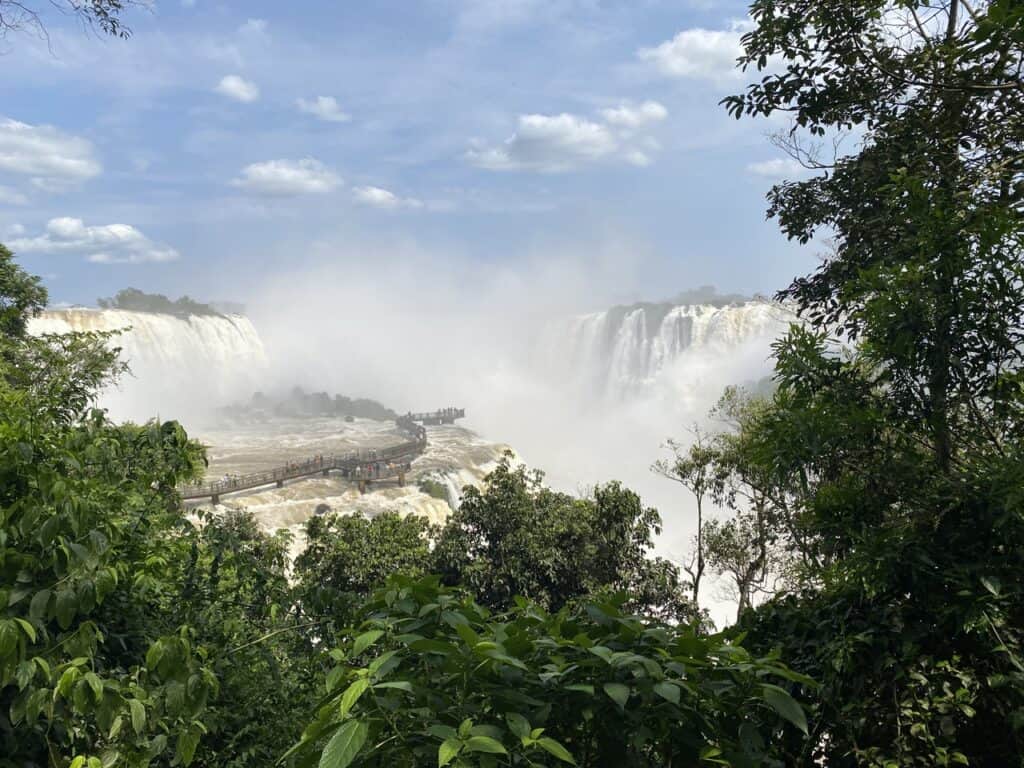
An observation tower, accessible via a creaky elevator, rounds off the experience. It is said that Eleanor Roosevelt lamented here, “My poor Niagara…”
You can also view Devil’s Throat from the Argentine side if the observation deck is open. However, this observation point is signified from the top and may be closed during heavy rain or flooding.
Details of Our Stay at Iguazu Falls
John from Brazil Nature Tours organized our stay and accommodations in Foz de Iguazu, just as he did for our Pantanal trip.
We had a delightful guide who met us at the Foz de Iguazu airport and escorted us to our lodging, the Sanma Hotel. He remained our guide throughout our stay.
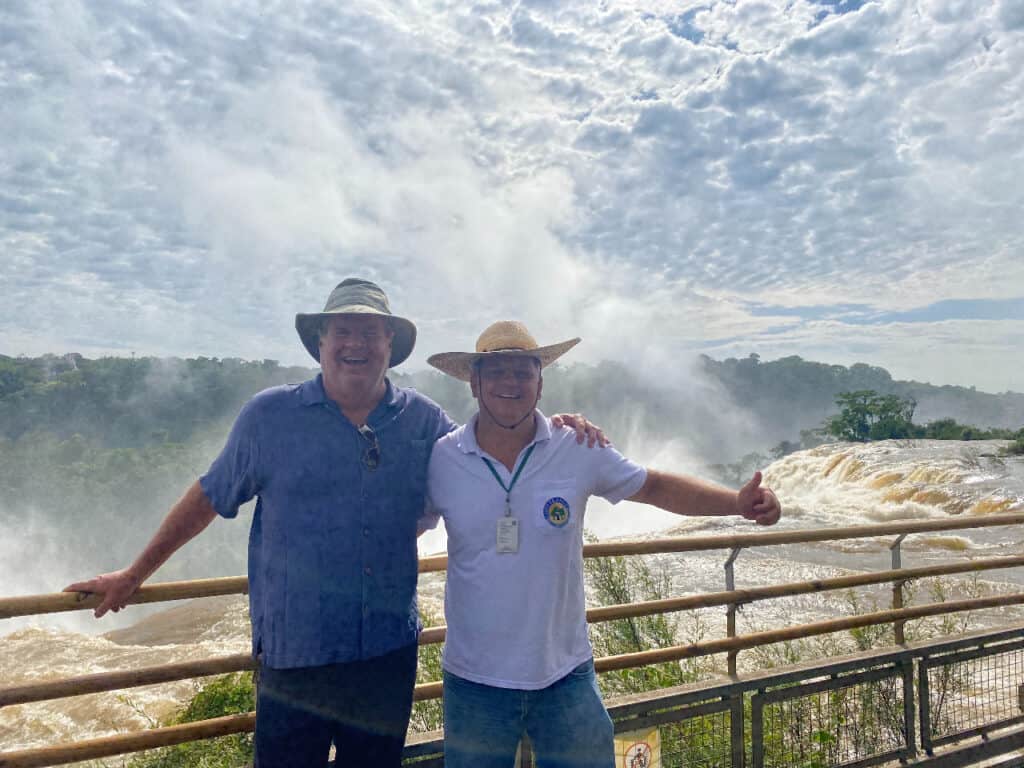
The Sanma Hotel is a luxurious five-star property located close to Iguazu Falls within the Iguazu National Park in Brazil. We had a spacious and beautiful room, enjoying poolside time and delightful dinners at the bar. Both the food and service were exceptional.
Essential Tips for Your Visit
Below, I’ll outline the day-to-day details of our visit to Iguazu Falls. However, first, I want to emphasize some important tips based on our experience.
- Both Brazil and Argentina have established national parks for their respective sides of Iguazu Falls. Both parks are referred to as Iguazu or Iguaçu National Park.
- You can visit both the Argentine and Brazilian sides of Iguazu Falls in a single day. We did and had an enjoyable experience. However, it’s best to start on the Argentine side early to beat the crowds. As the day gets busier, navigating narrow bridges and pathways becomes more challenging, and popular viewing points get crowded, making it harder to take photos without other people in them.
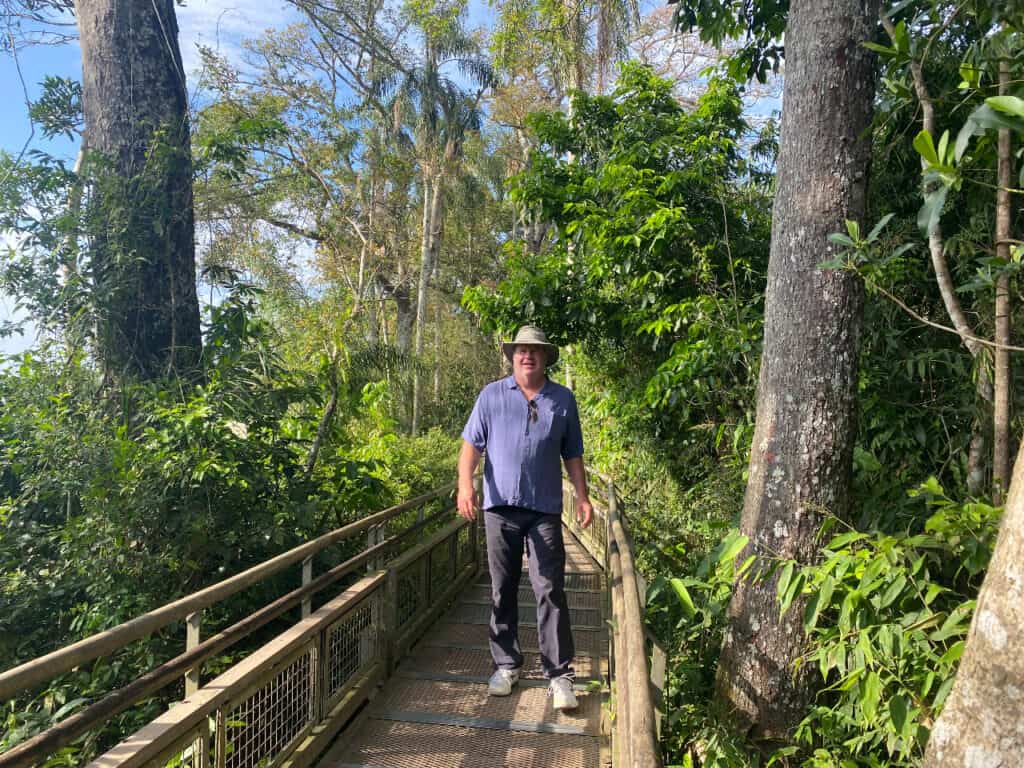
- We were in good physical shape and able to walk the Argentine side at a moderate pace without taking breaks, aside from enjoying the views and taking photos. If you prefer to walk slowly or take frequent breaks, seeing both waterfalls in one day would be more challenging.
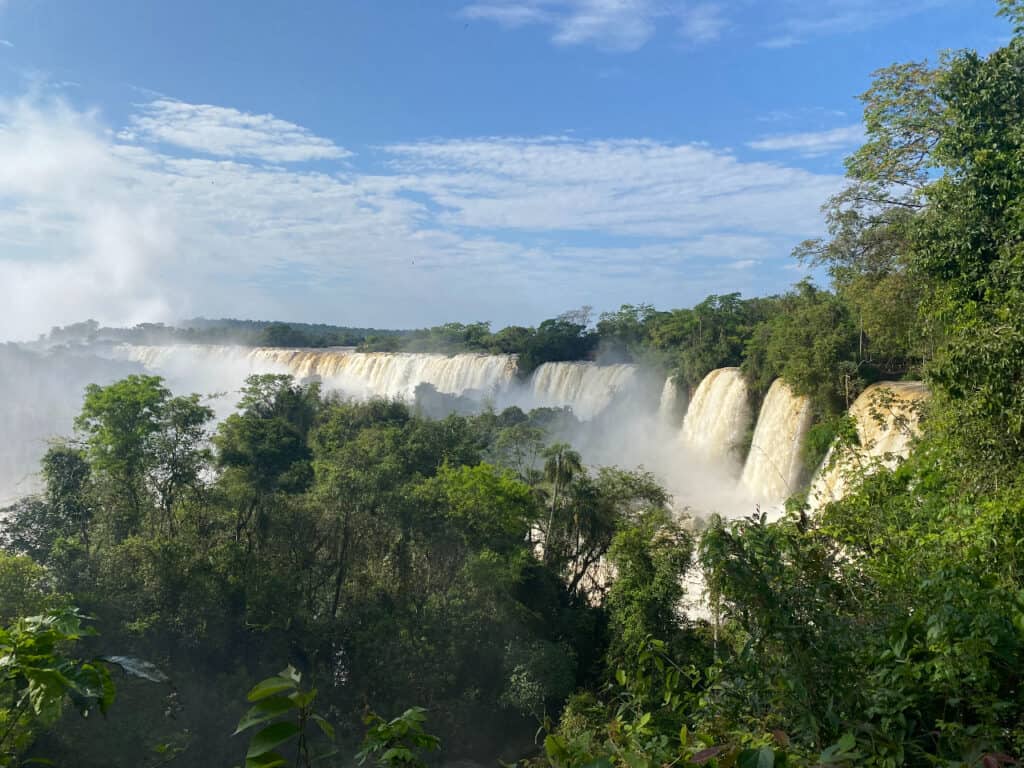
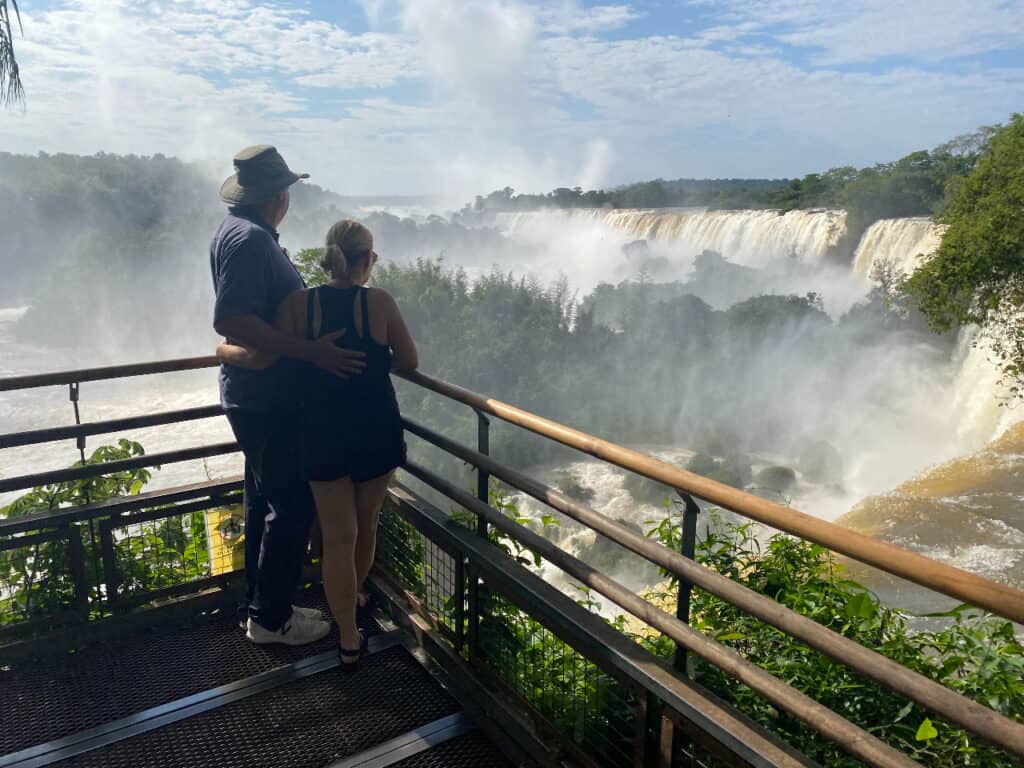
- We visited the Brazilian side in the early afternoon when it was busy. However, the layout of the pathway allowed us to navigate comfortably and enjoy the stunning views of the Falls without feeling overwhelmed by crowds. Despite the number of visitors, we found plenty of spots to stop and take photos unobstructed.
- We enjoyed a late lunch on the Brazilian side at a large buffet-style restaurant called Porto Canoas, located at the end of the walking path with excellent views of the Falls. While the pricing was high compared to other dining options in Brazil, it was reasonable for a tourist-focused restaurant. The food quality was excellent.
- Although we planned an extra free day in Foz de Iguazu, hoping for various activities, we were disappointed. The long border wait made returning to Argentina unappealing, and beyond the falls, there was little else to do in the Brazilian National Park.
- While there were a few trivial attractions, such as a Wax Museum in Foz de Iguazu, they offered little interest. Our guide took us into the city center to explore, but other than some local shops, there was not much to see. Additionally, certain areas had safety concerns that restricted us from exploring unaccompanied.
- There were no recommended restaurants in downtown Iguazu or beyond our hotel, so we opted to have all our meals at the hotel bar.
- We had set aside an extra day for exploration or relaxation by the hotel pool, but torrential rain forced us to spend the day indoors.
- Thus, if you’re short on time, it is entirely feasible to allocate just one full day to experience both sides of the falls without missing out on anything significant in Iguazu that you would later wish you had done.
- However, if you find yourself near this part of the world, it would be a tremendous loss not to include Iguazu Falls in your itinerary. Without a doubt, the falls are absolutely breathtaking, and I was thrilled to have them as part of our journey through Brazil and Argentina.
Day One of Our Iguazu Itinerary: Arrival
On our first day, we arrived late in the afternoon, leaving us just enough time for a delightful dinner at our hotel before retiring to bed for an early start the following day.
Day Two: Full Day Visit of Both Sides of Iguazu Falls
The next day, our guide picked us up at around 6:00 am for a 15-minute drive to the Argentine border.
Unfortunately, we had to wait 1.5 hours in line for passport stamping to cross the border, which is apparently a common occurrence, though evidently, the Argentine government frequently adjusts requirements for border crossings, so your experience may vary. After clearing this process, we drove another 30 minutes to reach Iguazu National Park.
We thoroughly enjoyed this National Park with its upper and lower paths, which granted us multiple perspectives to relish the Falls.
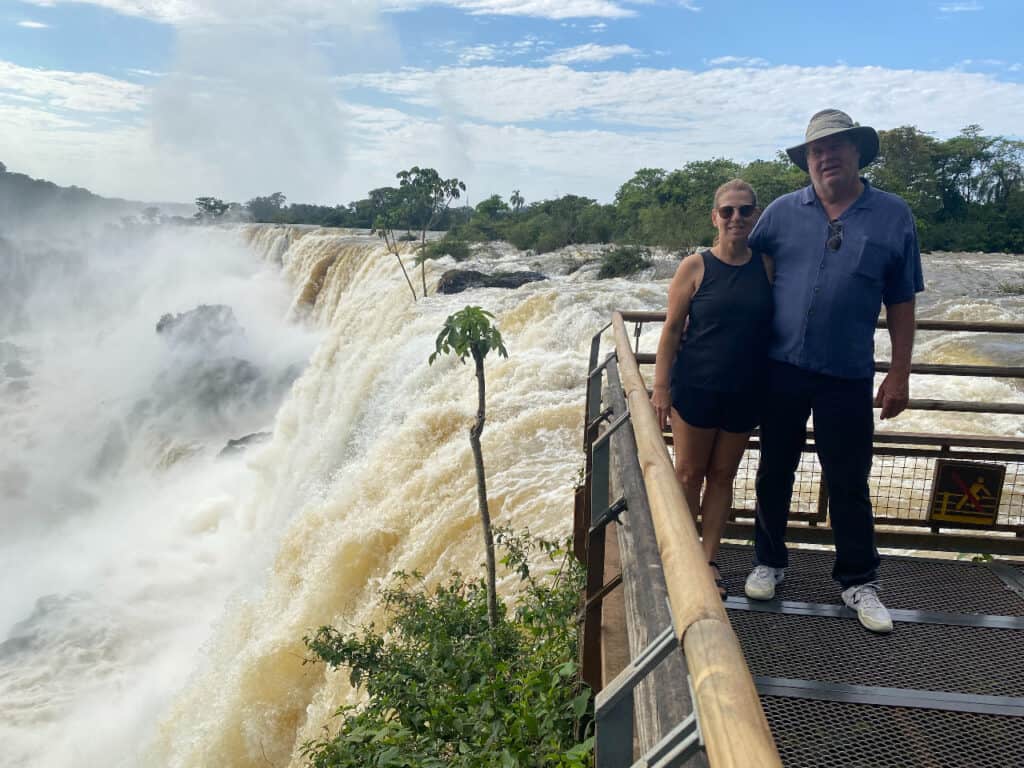
Arriving early allowed us to have most of the park and its trails to ourselves, enriching our experience as we enjoyed the narrow bridges and observation points in a peaceful setting, almost entirely alone.
We spent about 3 hours in the park, feeling completely satisfied with our time there. We weren’t rushed and immensely appreciated all the stunning vistas.
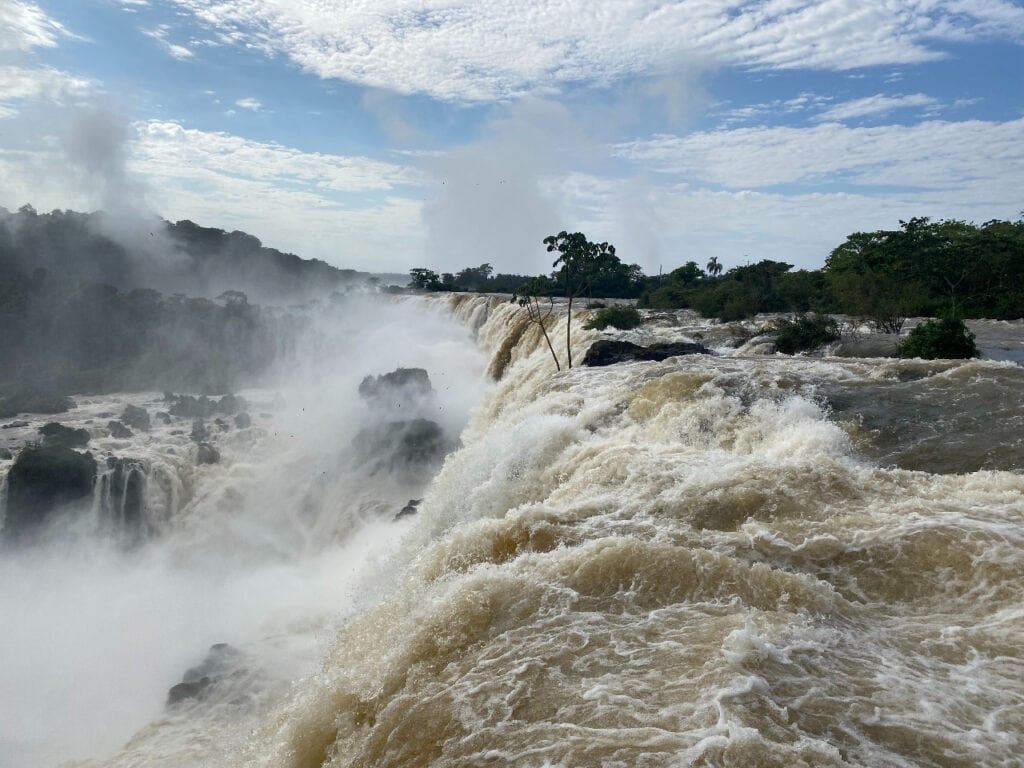
Had we arrived later, we would have undoubtedly faced large crowds, altering the overall experience considerably, as we did encounter masses of tourists during our exit.
Brazilian Side of Iguazu Falls
We returned through the border much quicker, with no need to queue again for passport stamping.
Afterward, we traveled for about 20 minutes to reach Iguazu National Park.
The park features an expansive parking lot and Tourist Center at its entrance. Most visitors typically purchase tickets and queue for shuttle buses since parking near the falls is extremely limited. However, since we had a licensed guide, we exited the vehicle to buy tickets inside the Tourist Center while driving the remainder of the way to the falls.
This drive within the National Park offered beautiful sights and led us directly to the start of the path along the falls in just 10 minutes.
The walkway was leisurely, primarily downhill, and paved, keeping the falls always to our right for unobstructed views.
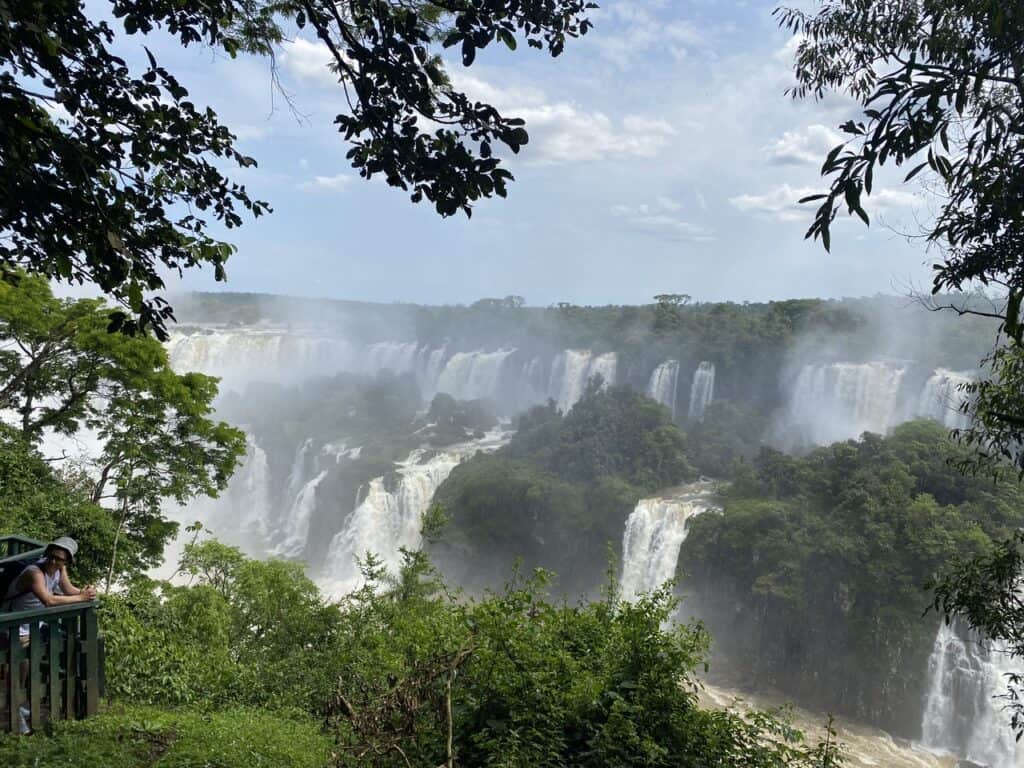
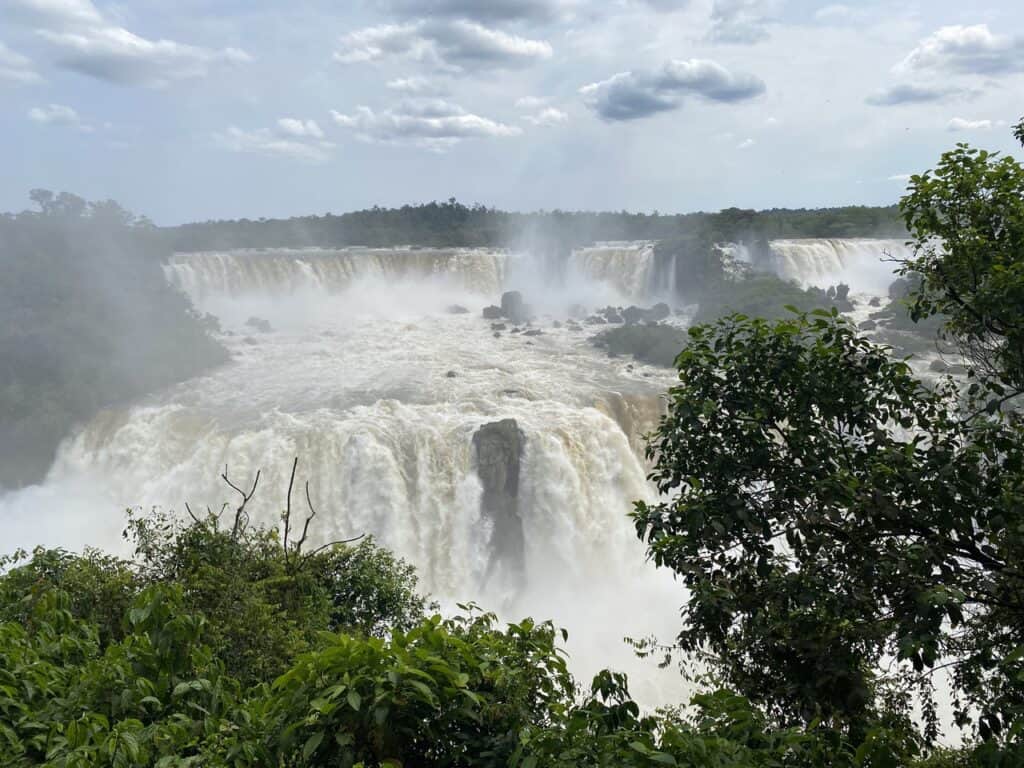
Though there were many visitors, it never felt overcrowded, and we enjoyed spectacular views.
By walking along the perpendicular path towards the base of Devil’s Throat, we ended up delightfully soaked as we got increasingly close to the falls, experiencing the thunderous roar and force of the water.
We then made our way to the only sit-down restaurant within the park, where we enjoyed a delicious lunch with breathtaking views of the falls. Afterward, our tour concluded and our guide took us back to our hotel around 4:00 pm.
Day Three: Relaxation
Despite our ambitious plans to explore the area further, we found very little interest in activities. Unfortunately, severe rain hindered us from enjoying the hotel pool.
Nevertheless, we used the opportunity to catch up on rest and appreciated the downtime after two weeks filled with travel and exploration.
Final Thoughts
Iguazu Falls, located in both Argentina and Brazil, is a UNESCO World Heritage Site and one of the world’s natural wonders. It is undoubtedly worth including in any travel itinerary for Brazil or Argentina.
You can easily experience both sides of the falls in a single day, and if you’re pressed for time, you need not dedicate more time to see them.



